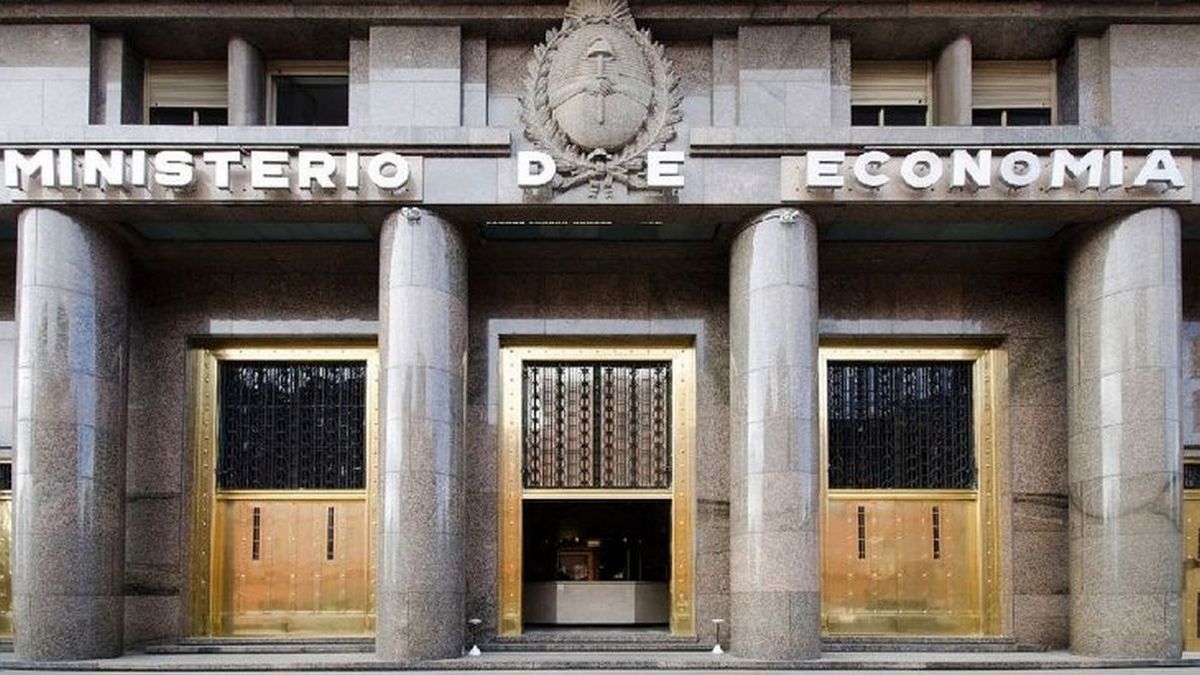The team of Luis Caputo will face this Wednesday the first debt tender in pesos of the year. The operation will be carried out in a week marked by the dissemination of data on inflation December and the Central Bank’s announcement about the cut devaluation rate in half from February. Given these changes in the official dollar tableon the city tables there are expectation on the evolution of interest rates and they understand that the yield curve of securities in local currency could be compressed again.
January It is a month of important expirations of debt in pesos. According to data from the Congressional Budget Office (CPO), these are approaching $14 billion. While, according to estimates by the consulting firm 1816, they total $15.8 billion. In any case, most of it is concentrated at the end of the month and will be faced in a second tender, scheduled for Wednesday the 29th.
Meanwhile, In this Wednesday’s tender, Economy will face commitments for nearly $1.7 billiona much lighter amount especially concentrated in one Lecap (fixed rate capitalizable bill) that expires this Friday. If the various payments of Boncer (inflation-linked bonds) since the last tender last year, the amount to be renewed is close to the $2 billion.
Debt tender in pesos: the menu
Seeking to refinance those payments, the Ministry of Finance, which conducts Pablo Quirnodecided to offer investors a four instrument menu.
They will reopen two Lecap: the S31L5, which expires in July of this year, and the S31O5, which expires in October 2025. Also within the fixed rate segment, it will be issued a new Boncap (capitalizable bond) to June 30, 2026, which will become the longest of the curve. Finally, the Boncer TZXM7, which expires in March 2027.
image.png
Crawling peg decline: what does the market expect for rates?
The placement will take place this Wednesdaybetween 10 a.m. and 3 p.m., a day after INDEC announced that the December inflation was 2.7%three tenths above the November CPI. After that publication, the BCRA confirmed that it would reduce the crawling peg rhythm from 2% monthly to 1% as of February 1.
In this framework, the eyes in the city aim to elucidate how the rest of the nominal variables will be accommodated in the face of the cut in half of the rate of rise of the official dollar printed by Caputo’s exchange table. Above all, What will happen to interest rates.
On the one hand, because Many market analysts expect the Central Bank to accompany this reduction of the “crawling peg” with a cut in the monetary policy ratewhich is what remunerates the LEFI (the liquidity bills issued by the Treasury that the Central Bank sells and buys from the banks). “We assume that, when they lower the ‘crawl’, they will also lower the monetary policy rate (MPR), although in a considerably smaller proportion. The ‘crawl’ pace will drop by half, but the rate may drop by 10% or 15%, that is, between 300 and 500 basis points from the current 32% TNA of the LEFI rate,” said the consulting firm 1816.
Others believe that the BCRA should be more cautious and take into consideration the seasonal drop in money demand that will take place over the coming weeks to avoid risking further pressure on parallel dollars.
On the other hand, there is expectation to see how the yields on sovereign debt instrumentsboth in this Wednesday’s tender and in the secondary market now that the new exchange rate table was officially announced.
In that sense, the economist Federico Machado He pointed out that, with the reduction of the “crawling peg” to 1%, the current rate in pesos will go from a yield of 8.5% per year in official dollars to 22.2% per year. “It is expected that the market will jump headlong and that rate will compress. To return to the 8.5% yield, the TNA in pesos would have to fall 12 points,” he stated.
The thing is, In addition to aiming to reduce the inertia of inflation, the lower rate of devaluation also aims to increase the attractiveness of “carry trade” bets. (the strategy known as the financial bicycle), which offered juicy profits in dollars during 2024 but which partially reduced its incentive in recent times due to the compression of interest rates in pesos.
A report of Personal Investment Portfolio (PPI) argued that cutting the ‘crawling peg’ is “a strategic maneuver both to deepen disinflation by influencing unregulated goods (weighting of 64.3%) and to make the crawl rate spread more attractive, which is key to sustaining the ‘carry trade’ of importers and exporters and that results in purchases of BCRA reserves.”
So, PPI agreed that there is room for a reduction in yields in pesos: “With the statements of Milei (after the October data) and Caputo (after the November data), the market began to pass it on to prices via a strong compression of rates , especially in the long stretch of the fixed rate curve. This brought the crawl spread to almost zero at the long end of the curve. A reduction in the crawl would widen the spread with the rate from around 0.6/0.7 percentage points TEM (monthly effective rate) to 1.6/1.7 percentage points in the short section of the curve and would restore it to 1 .1/1.2 in the long section. That is why “We see room for a rate cut.”
Source: Ambito
I am a 24-year-old writer and journalist who has been working in the news industry for the past two years. I write primarily about market news, so if you’re looking for insights into what’s going on in the stock market or economic indicators, you’ve come to the right place. I also dabble in writing articles on lifestyle trends and pop culture news.




